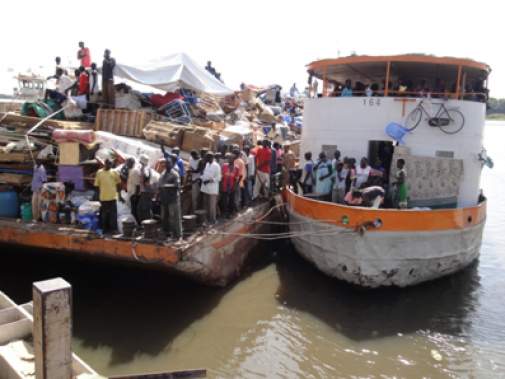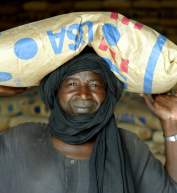- Agriculture and Food Security
- Democracy, Human Rights and Governance
- Economic Growth and Trade
- Education
- Environment and Global Climate Change
- Frontiers in Development
- Gender Equality and Women's Empowerment
- Global Health
- Science, Technology and Innovation
- Water and Sanitation
- Working in Crises and Conflict
- Responding in Times of Crisis
- Crises and Conflict Countries
- How We Do It
- Where We Work
- Afghanistan
- Benin
- Bosnia and Herzegovina
- Bulgaria
- Burkina Faso
- Burma
- Cambodia
- Cameroon
- Central African Republic
- Chad
- China
- Comoros
- Côte d’Ivoire
- Democratic Republic of the Congo
- Ecuador
- El Salvador
- Ethiopia
- Fiji
- Ghana
- Guatemala
- Haiti
- Honduras
- Horn of Africa
- India
- Indonesia
- Kenya
- Lesotho
- Liberia
- Madagascar
- Malawi
- Mali
- Mauritania
- Montenegro
- Mozambique
- Niger
- Pakistan
- Papua New Guinea
- Paraguay
- Philippines
- Republic of the Congo
- Senegal
- Somalia
- South Sudan
- Sri Lanka
- Sudan
- Syria
- Tanzania
- Thailand
- The Gambia
- The Sahel
- Tunisia
- Turkey
- Tuvalu
- Vietnam
- Yemen
- Why It Matters
- How To Help
- Resources
- Building Resilience
- Conflict Mitigation and Prevention
- Disaster Risk Reduction
- Peacebuilding and Reconciliation
- Promoting Peaceful Political Transitions
- Providing Safe & Secure Environments for Development
- Recovering From Crisis
- World Humanitarian Day
- Responding in Times of Crisis
South Sudan

More than a year after independence, South Sudan continues to experience a steady inflow of returnees from Sudan, many of whom require humanitarian assistance in transit and support to restart their livelihoods. In addition, localized conflict continues to cause population displacement. The U.N. estimates that 2.9 million people are in need of food and livelihoods assistance countrywide.
Moreover, conflict between the Sudanese Armed Forces (SAF) and the Sudan People’s Liberation Movement–North that began in Sudan’s Southern Kordofan and Blue Nile states in 2011 continues to cause refugee influxes to South Sudan. Insecurity, landmines, and transportation and communication challenges due to limited infrastructure also hinder the delivery of critical assistance to populations in need. On October 6, 2011, U.S. Chargé d’Affaires, a.i., Christopher J. Datta re-declared a disaster in South Sudan due to the ongoing complex emergency. As of July 17, the U.S. Government (USG) had provided nearly $244.3 million to support humanitarian activities across South Sudan in Fiscal Year (FY) 2012.
USG HUMANITARIAN FUNDING PROVIDED IN FY 2012
|
USAID/OFDA Assistance to South Sudan |
$39,671,269* |
|
USAID/FFP Assistance to South Sudan |
$184,415,400 |
|
State/PRM Assistance to South Sudan |
$20,200,000 |
|
Total USAID and State Assistance to South Sudan |
$244,286,669 |
*(As of July 17, 2012)
Latest South Sudan Fact Sheet
South Sudan Complex Emergency Fact Sheet #5 (287kb PDF) and map (182kb PDF)
Key Developments
The flow of refugees from Southern Kordofan and Blue Nile states, Sudan, to South Sudan continued between May and August, with approximately 175,000 Sudanese refugees residing in South Sudan as of the end of August, according to the Office of the U.N. High Commissioner for Refugees (UNHCR). USAID’s Office of U.S. Foreign Disaster Assistance (USAID/OFDA) continues to provide humanitarian assistance to host community populations in Maban County, Upper Nile State, near areas with large refugee populations. Through Relief International, USAID/OFDA is providing nutrition and livelihoods support in Maban County, while USAID/OFDA partner GOAL is providing primary health care services in Maban County’s Jamam town.
As food prices have risen across South Sudan, the number of people in need of food aid has doubled, from 1.2 million in December 2011 to 2.4 million in July 2012, due to the growing economic and humanitarian crisis in South Sudan. To increase access to food for vulnerable populations, USAID/FFP recently committed $111 million toward the U.N. World Food Program’s 2012 Emergency Appeal and to support 2013 emergency needs. To complement the provision of food, USAID/OFDA is supporting several partners to increase community resiliency to continued economic shocks. One partner, Adeso, is working to improve the food security of returnees and host community populations in Northern Bahr el Ghazal State through the provision of cash assistance, cash-for-work (CFW) opportunities, commodity vouchers, and agricultural inputs and training. Through CFW activities, Adeso is rebuilding community resources, such as water and sanitation assets, while simultaneously providing income to community members. In addition, Adeso is providing livelihoods grants to returnees with trade and entrepreneurial skills to start businesses.
The South Sudan Relief and Rehabilitation Commission declared the Kosti way station in Sudan’s White Nile State empty as of June 26, following the airlift of nearly 12,000 returnees formerly stranded at the way station from Khartoum to Juba and the transport of returnees’ luggage from Kosti to Renk town in Upper Nile State, South Sudan. USAID/OFDA and USAID Office of Food for Peace (USAID/FFP) partners are actively responding to returnee needs at the temporary returnee transit center established outside of Juba for the Kosti caseload.
UNHCR conducted a one-month registration exercise in the Dadaab refugee camp complex from June 4 to July 4, identifying more than 7,300 new arrivals since October 2011. To address ongoing needs in the camp complex, UNHCR and partners continue to conduct health and protection screenings for new arrivals at the Dadaab registration center.
@theOFDA
-
theOFDA
MT @USAID: We are the largest provider of in-kind food aid + one of largest providers of cash-based food asst in the world. #WFD2012
6 hours 4 min ago.
-
theOFDA
RT @UNICEF: Did you know handwashing with soap is the single most cost-effective health intervention ever? #iwashmyhands Please RT!
4 days 13 hours ago.
-
theOFDA
Women and Girls Reduce Disaster Risk Every Day t.co/ZGNjnYIf #IDDR
4 days 17 hours ago.






Comment
Make a general inquiry or suggest an improvement.